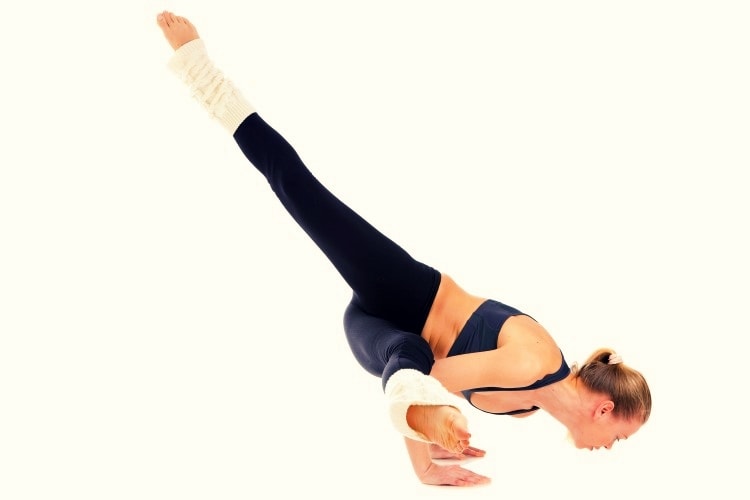We go back a long way, Jägermeister shots and I. At 14, I was always on the lookout for a great party—so I could sip from a cup of sweet frothy liquid and lose my inhibitions.
I wanted to slink and sway to the music, to feel sexy and alive. I wanted to be silly and escape and smile, even though I was feeling sad. For me, drinking brought this whole other dimension of my personality I didn’t know existed.
At crazy, not-entirely-legal secret warehouse parties, I found my tribe. We were all there for the good times and the euphoric beats: people from all walks of life, united by an appreciation of a hellraising remix and a Havana Club.
Thankfully, however, the 90s ended and I grew up. Still, I never lost my love for partying or my taste for alcohol. It just matured to a thirst for high grade champagne and sublime cocktails.
When I found yoga, alcohol gave me up—I just didn’t have a taste for it anymore.
During this point in my life I was recovering from chronic fatigue (read: too much stress and binge drinking). My body was highly sensitive to just about anything.
But the more I did yoga, the less I wanted the booze. Whenever I tried to indulge, it just didn’t sit right. And the more I learned about yoga philosophy, the more it felt like Prosecco no longer belonged in my life. I felt it in my body and in my practice; I felt clean and light.
In the past, I used alcohol as a crutch, masking who I really was. I blamed the bottle for all kinds of reckless behaviour and bad decisions. Then, I realized that I made plenty poor choices sober, too. I became convinced that having any alcohol would inhibit my progress.
So, for over two years, I was completely sober—apart from the occasional birthday or Christmas celebration. In my effort to be a good yogi and a better person, I followed a path of austerity.
I stayed in often because I didn’t know how to be out there sober. I grew tired of having to explain why I wasn’t drinking when I went out to a bar with friends.
Many assume that because yoga is the practice of purification, alcohol is strictly prohibited—but where is the practice if we’re playing so hard at being pure?
Soon after, though, I realized that life was for experiencing. Whilst I didn’t want to get drunk, I wanted to live fully and have fun.
So I got over myself and started going out. Sober at first, during which time I began to appreciate just how much trouble I was capable of getting myself into while completely unaided (more, usually). I began to relax the rules.
I changed the intention with which I approached alcohol. Rather than treating it like a “checking out” exercise, it became about being present through the pursuit of experience.
Patanjali teaches saucha (cleanliness) and ahimsa (non-violence). The former emphasizes keeping our body, mind, and energies clear; the latter encourages acting compassionately towards others and oneself. Both virtues advise abstaining from substances that are damaging for us.
However, Tantric philosophy is non-dualistic and teaches us to embrace all experience without judgment—there is no good or bad; everything we feel, think, sense, and experience is simply a manifestation of the Divine.
Tantra calls us to live our lives fully instead of closet ourselves away in fear.
"In Tantra, the world is not something to escape from or overcome, but rather, even the mundane or seemingly negative events in day-to-day life are actually beautiful and auspicious," says Pure Yoga founder Rod Stryker, a teacher in the Tantric tradition of Sri Vidya.
"Rather than looking for Samadhi, or liberation from the world, Tantra teaches that liberation is possible in the world."
Why deny yourself a little tipple? How does drinking for fun and leisure withhold us from liberation? It’s all just a state of mind.
The Aghori yogis of Varanassi, unorthodox Hindu sadhus who worship Shiva and Kali, engage in cannibalism as part of their spiritual practice. They eat morsels of flesh from the deceased and meditate on dead bodies in dark places, among other things, in an effort to recognise that all is one.
These monks look for purity in the filthiest places where others fear to tread, and seek to remain straight after performing acts of perversion.
Indulging in a glass of wine doesn’t sound so bad now, does it?
Modern day yoga is about being present, alive, and awake. Drinking is about escapism, numbing, and dulling the senses. They might feel contradictory, but I believe it’s a question of balance, like all things. If something is enjoyable, why give it up?
These days I’ll have an occasional glass of wine and usually feel it in my body after the first sip. If the mood is right though, I’ll drink up. If I’m in a chic cocktail bar, I’ll have the bartender mix me up something unique, and I can still get into Koundinyasana the next day, no problem.
A couple of times a year, maybe I’ll really let my hair down, which is always hilarious.
Recently, I was at a stunning yoga retreat centre in Costa Rica. They had a fully stocked bar complemented with fruits that they would literally shake down from the tree in their organic garden and juice right into my glass.
Sampling their master mixologists’ magic was a truly unforgettable experience, teaching me that there can be a place for alcohol in yoga. It’s just something to do with full awareness and good intentions.
Don’t deny yourself a drink without knowing why you’re doing it. Bonding over cocktails or shots is a very human experience. If you’re going to have a drink, however, be kind to your body and choose good quality alcohol, and do it to enhance your pleasure, rather than to medicate pain.


